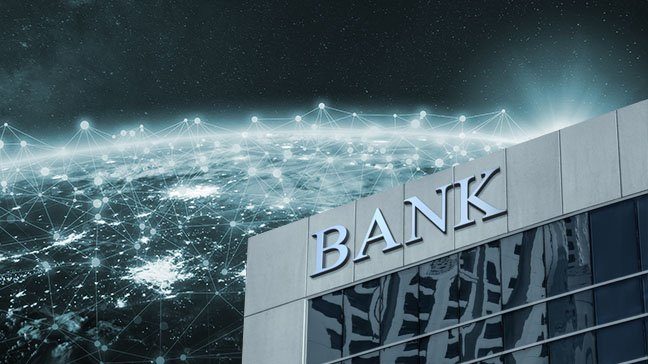Wholesale and Long-term Finance Banks
2020 FEB 20
Mains >
Economic Development > Indian Economy and issues > Banking sector

WHY IN NEWS?
Infrastructure is the lifeblood of a country’s development and easy availability of cheap and long term finance is a necessary prerequisite for building a robust infrastructure base. The challenges in achieving the above has prompted experts to suggest exploring the idea of Wholesale and Long Term Finance Bank.
WHAT IS WLTF BANK?
- WLTF bank is a differentiated bank which focus on lending long-term to cater to the funding needs of certain sectors of the economy which create assets with long gestation period such as infrastructure and core industries.
- The idea of WLTFs is based on recommendations of Nachiket Mor Committee.
NEED FOR LONG TERM FINANCING BANK:
- The Twelfth Five Year Plan had projected the infrastructure financing requirement for the country at US$ 1 trillion during the plan period and the funding gap is estimated to be above Rs. 5000 billion.
- There are three major sources for availing long term finances- Banks, Corporate Bonds and Development finance institutions (DFI)(Eg:- ICICI, IDBI etc). However they faces the following issues:
I. Banks:
- Indian banks have been saddled with non-performing and restructured assets in the infrastructure sector thus lending to the sector is risky.(As of 2015, loans to the infrastructure sector accounted for 13 percent of NPAs in the banking sector)
- Due to long gestation / repayment period of assets in sectors such as infrastructure, banks face asset-liability mismatch issues2.
II. Corporate Bond Market
- Domestic corporate bond market is highly underdeveloped and is estimated at around only 14 percent of the GDP which is much lower than the equity markets.
III. Development finance institutions (DFI)
- Due to continued government interference and changes in the economy, DFIs accumulated high levels of NPAs.DFIs like ICICI and IDBI have transformed themselves into commercial banks beating their original purpose.
ADVANTAGES OF WLTF BANKS
- Boosting Industry and Infrastructure financing:
- Differentiated banks concentrating on wholesale and long-term financing could act as steady and additional source of funding for small, medium and large businesses, and infrastructure sector over a longer term.
- Building specialisation and expertise in infrastructure funding:
- Expertise will be fostered in the banking system that could lead to enhanced efficiency in terms of reduced intermediation cost, better price and improved allocation of capital.
- Addressing NPA crisis and asset-liability mismatches:
- WLTF banks may ease up the pressure of long maturity loan assets on the books of commercial banks, and in turn, moderate their asset-liability mismatch.
- Promote diversification and innovation:
- Entry of such banks as market makers in debt, equity, forex, securitization, and other markets would further expand the markets and encourage product innovation, appropriate price discovery and superior market liquidity.
- Global Best Practice:
- Countries like Japan, South Korea ,Brazil etc have specialised financial agencies for ensuring long term financing.
CHALLENGES
- Higher cost of fund due to faulty business model:
- Lack of access to savings and other retail deposits would push the cost of funds for the WLTF banks upwards.
- Raising of long term deposits and debt at competitive cost would not be easy, and funding of long term and infrastructure projects at higher interest costs could make the projects economically unviable.
- Reputed and well-rated corporates would prefer to access the debt markets directly at comparatively lower interest rates than those offered by WLTF banks.
- Asset Liability Mismatch: It may be difficult for WLTF banks to manage Asset Liability Mismatch as they do not have flexibility in their asset liability structure compared to universal commercial banks. (They have limited options to increase assets)
- Non-Performing Assets: Since WLTF lacks sustained earnings that retail credit portfolios normally provide, in times of economic downturn they could face an enhanced risk of non-performing assets on the books.
- Lack of enabling market infrastructure: such as absence of secondary markets in securitized assets, low demand for long-tenor instruments, and small investor base for such assets.
SUGGESTIONS:
- Minimizing government participation as it will affect the operational freedom critical for a specialized bank.
- Setting up a proper regulatory architecture that ensures growth along with adequate safeguards.
- Encouraging strong players by issuing licences only to entities that are able to demonstrate the ability to build such a highly specialized bank, and are in a position to bring in capital to both meet regulatory requirements and run the business on a sustainable basis.
CONCLUSION:
With the right kind of ownership and regulatory architecture, these banks will help improve efficiency in the financial system and enhance the flow of credit to businesses with large and long-term financing needs.
Practice Question
Q. What are Wholesale and Long Term Finance Bank. In light of failure of Development Financial Institutions to attain their desired objectives, do you think WLTFs will be a successful alternative?
